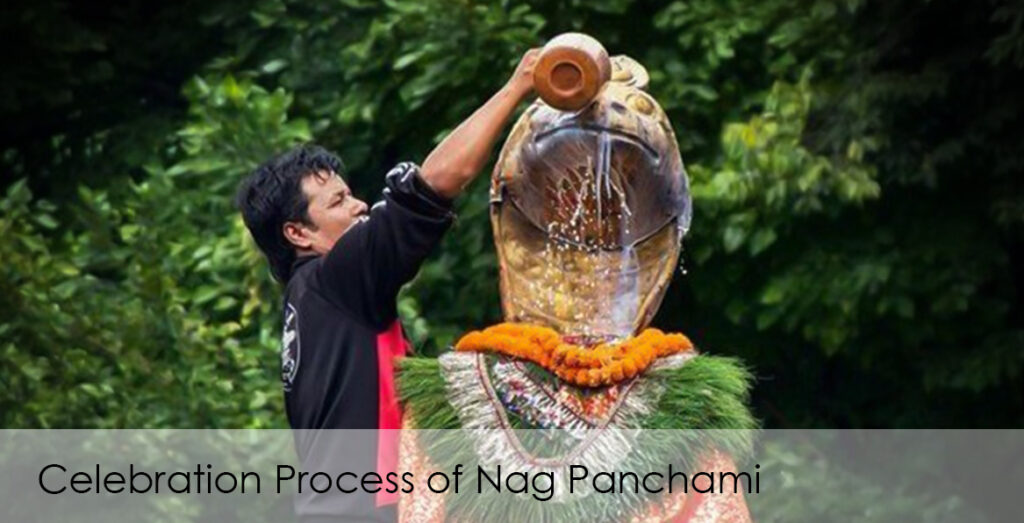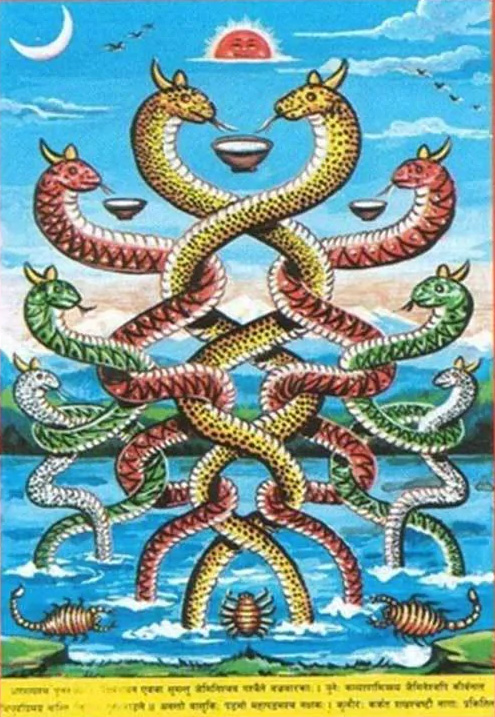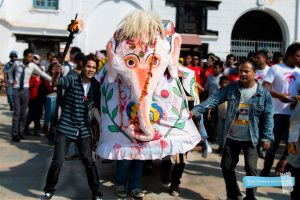
Nag Panchami is an auspicious Hindu festival primarily celebrated by Hindus in Nepal. This day commemorates the worship of snake deities or Nags/snakes on Panchami tithi during Shravan month amid August. It is celebrated on the fifth day of Shravan month which comes after no-moon night time within the month of Shrawan or Sawan, in English which represents giving up July and August when days are lengthy! Counted amongst the many gods of Hindu mythology, nags symbolize strength and fertility, protection. This day entails the worship of these serpent gods, with a significant cultural and religious history in Hinduism.
Celebration process of Nag Panchami
On the day of Nag Panchami, the decorated snakes’ image is used to decorate homes on very early morning of Nag pachmi. These images are commonly hung above the entry doors in Kathmandu valley with a cow dung paste. These offerings are in the form of milk, dubo (a sacrosanct kind of grass), sesame seeds, barley. nuts & lava (puffed rice). In addition to carrying out these rituals in their homes, people also make a visit to the temples and sacred places that are associated with snake deities. In Nepal, major locations are Nag Pokhari in Kathmandu, Nag Daha in Lalitpur, and Changu Narayan in Bhaktapur city, Taudaha in Kirtipur are the most important pilgrimage area. Celebration-time of Nag Panchami also signals the upcoming all-important Hindu major festivities lined up within this season.

Origin of Nag Panchami
Nag Panchami is originated from legends mentioned particularly in the MahaBharat and other Vedic scriptures. The most famous legend is of Lord Shiva gets overcome a malevolent serpent, Nag Kaliya which occurred with respect to this day of Shravan Panchami. He put an end to his maleficence by defeating Nag Kaliya, as the myth goes. This victory set the base for the celebration of Nag Panchami.
Next Myth of Nag Panchami

Moreover, in the ancient history of Kathmandu valley (Nepal) there is another famous mythological story related to this festival. It is believed that the valley was once a vast lake, home to powerful Nags, the controllers of rain.
Humans found that the land had enormous potential and proceeded to drain the lake however this caused grave anger among Nags as they watched their habitat disappear. They avenged by stopping the rains leaving drought. Only then did tantric rituals performed by the people, stop the demolition of dwellings and houses built on dead bodies or those demolished after their demise from Nag to bring drought to the end. The locals pledged to worship the snake gods by fasting on 5th day of Shrawan every year. Certain lakes such as Taudaha and Nag Daha were also designated to be kept protected sanctuaries
Nag Panchami: Snake Worship Tradition in Nepal
A more localized and widespread story in Nepal links Nag Panchami with the agricultural roots of country. Once a farmer killed the baby snake while ploughing his field in ancient times. The mother snake bit the farmer’s family and avenged them. One of his daughters, though placing milk and offerings near the snake hole in an act of devotion for the safety to her mother’s serpent. Impressed by the girl’s sincerity, the mother snake granted her a boon, allowing her family to be restored to life. Since then people of Nepal have worshiped Nags during this festival to keep their families safe from any harm and bring prosperity, happiness security. Therefore, ploughing the fields is also counted as sin on this day;
Watch a video on Nag Panchami at https://www.youtube.com/watch?v=bUrHxMOTD6c
Nags stand for not just rain or fertility every year in Hinduism. They are incredibly symbolic of life, death, rebirth, and immortality. Shiva is one of the most powerful Hindu deities, shown with a snake wrapped around his neck representing death but also part of the bigger cycle. During Nag Panchami, Hindus honor and worship the nine principal snake deities, known as the protectors of the underworld (Patal Lok). These nine Nags include Ananta, Vasuki, Shesha, Padmanabha, Kambala, Shankapala, Dhartarashtra, Tashaka, and Kaliya. The latter, Kaliya, is particularly significant, with his legends intertwined with both Shiva and Krishna.
Nag Panchami is a beautiful festival that reflects the interrelationship between religion and nature. By worshipping the snake deities, people express their respect for the creatures of the Earth, maintaining a tradition that has spanned centuries. Through various legends and myths, the festival highlights the harmonious bond between humans and animals, reinforcing the belief in coexisting with and protecting all forms of life.




